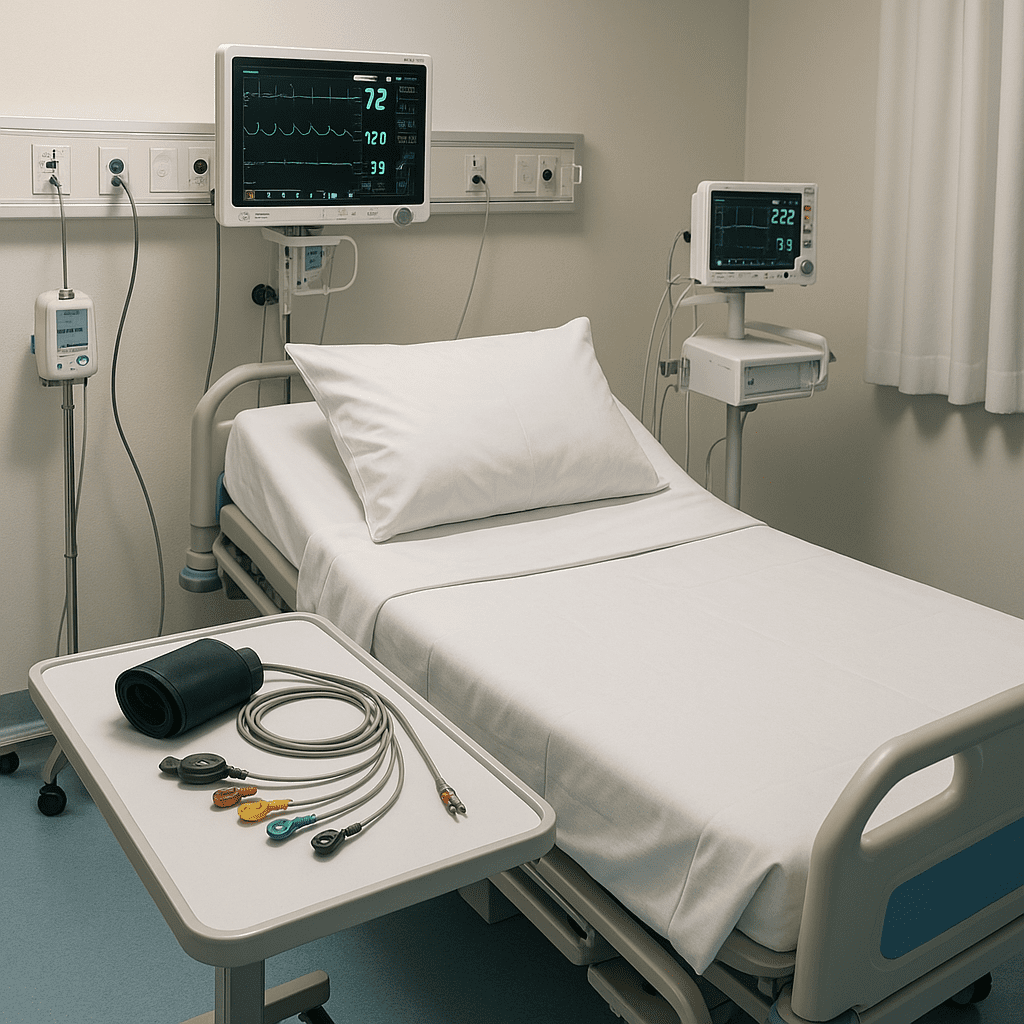Caring for patients after cardiac catheterization is one of the most essential responsibilities for a registered nurse (RN) in cardiovascular care. This procedure, commonly used for diagnosing and treating heart conditions, requires careful post-procedure monitoring to prevent complications. For those preparing for the NCLEX or reviewing cardiac care concepts within a nursing bundle, understanding post-cardiac catheterization nursing care is critical for ensuring safe and effective outcomes.
💓 What Is Cardiac Catheterization?
Cardiac catheterization is a minimally invasive diagnostic and therapeutic procedure where a thin, flexible tube (catheter) is inserted into a blood vessel—usually through the femoral or radial artery—to reach the heart. It helps measure pressures, evaluate blockages, and sometimes deliver treatments such as angioplasty or stent placement.
The nurse’s role after the procedure is vital to monitor for bleeding, infection, arrhythmias, and vascular complications.
🩺 Key Nursing Responsibilities Post-Cardiac Catheterization
1. Monitor Vital Signs and Cardiac Rhythm
After the procedure, the registered nurse should check:
- Blood pressure, heart rate, and oxygen saturation frequently (every 15 minutes for the first hour, then per protocol).
- ECG for dysrhythmias or changes indicating ischemia.
This monitoring helps detect early signs of complications such as hypotension or cardiac tamponade — topics commonly tested on the NCLEX.
2. Assess the Catheter Insertion Site
Inspect for:
- Bleeding or hematoma formation
- Swelling, warmth, or redness
- Pulses distal to the insertion site
If bleeding occurs, apply manual pressure immediately and notify the provider. Document findings and interventions — accurate nursing documentation is critical for patient safety and NCLEX readiness.
3. Maintain Bed Rest and Limb Position
Patients with a femoral approach should remain flat with the affected leg extended for several hours post-procedure. The nurse ensures:
- The patient avoids bending the leg.
- Pressure dressing or closure device remains intact.
- Comfort measures are provided during immobility.
For radial access, elevate and support the arm to minimize swelling and monitor the site closely.
4. Monitor for Complications
Registered nurses should remain alert for signs of:
- Bleeding or hematoma: swelling or firmness near the site
- Retroperitoneal bleeding: back or flank pain with hypotension
- Thrombosis: decreased pulses or cool extremities
- Arrhythmias: irregular heart rhythm on ECG
- Infection: redness or purulent drainage
Early recognition and response are essential parts of nursing post-procedure care.
5. Encourage Hydration
After the procedure, patients need to flush out contrast dye used during catheterization. The nurse encourages oral fluids or administers IV fluids as ordered to protect renal function — another point emphasized in nursing bundles and the NCLEX.
6. Educate the Patient
Education is a vital component of nursing care. The RN nurse should teach:
- Avoid strenuous activity or heavy lifting for several days.
- Monitor the insertion site for bleeding or infection.
- Report chest pain, dizziness, or changes in limb color or sensation immediately.
- Follow prescribed medications and hydration instructions.
Patient teaching is a critical NCLEX topic related to safety and post-procedure care.
7. Document All Findings
Proper documentation ensures continuity of care. The registered nurse records:
- Vital signs and assessments
- Site condition and pulse checks
- Fluid intake/output
- Patient education and response
This demonstrates accountability and supports evidence-based nursing practice.
🧠 NCLEX Tips for Nurses
Expect NCLEX questions that test your knowledge on:
- Monitoring for post-catheterization bleeding
- Managing potential complications (e.g., retroperitoneal bleed)
- Patient education about post-procedure restrictions
- Safe positioning and hydration management
Remember: Safety first — always prioritize airway, breathing, and circulation (ABCs) in post-procedure patients.
💡 Key Takeaway for Registered Nurses
Post-cardiac catheterization care demands vigilance, precision, and compassion. RNs are responsible for early detection of complications, promoting recovery, and providing education that prevents readmissions. Strengthening your understanding through nursing bundles and NCLEX review will enhance both exam performance and real-world clinical judgment.
💬 FAQs
The priority is to monitor for bleeding and ensure hemodynamic stability. The registered nurse should check the insertion site, vital signs, and distal pulses frequently.
Typically, 4–6 hours, depending on the closure device used. The nurse should ensure the leg remains straight and the patient avoids movement.
Bleeding, hematoma, infection, arrhythmias, and contrast-induced nephropathy are the main risks.
Hydration helps eliminate contrast dye and reduces the risk of kidney damage, a key nursing intervention emphasized in the NCLEX.

